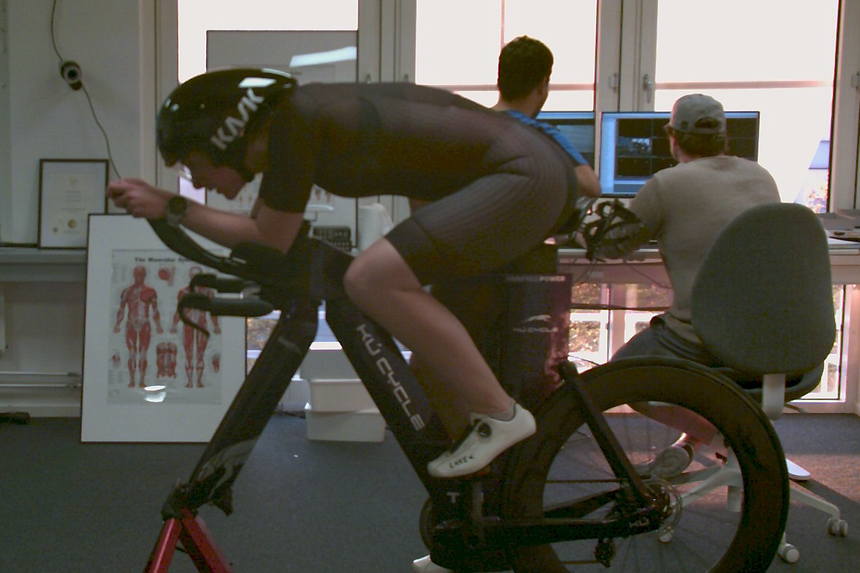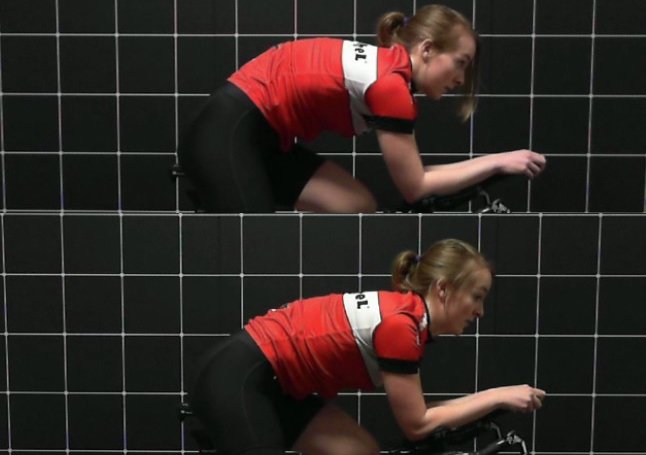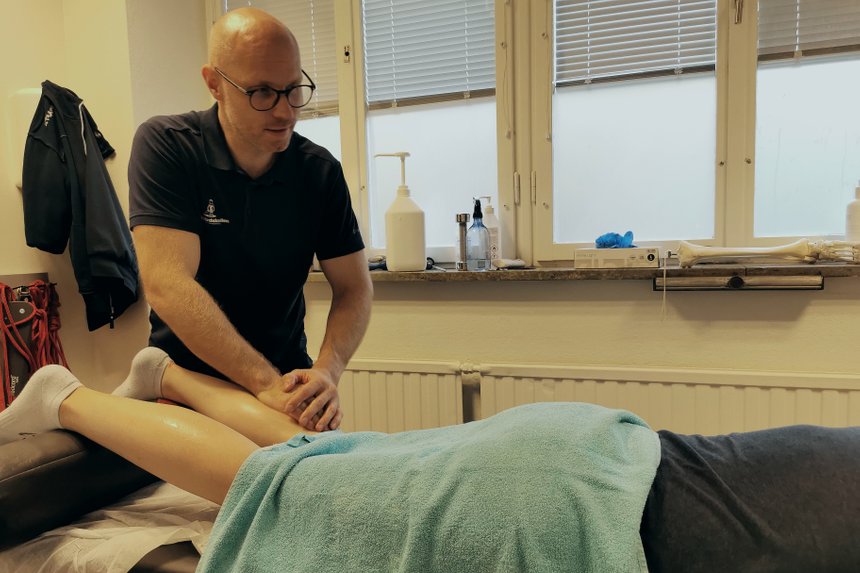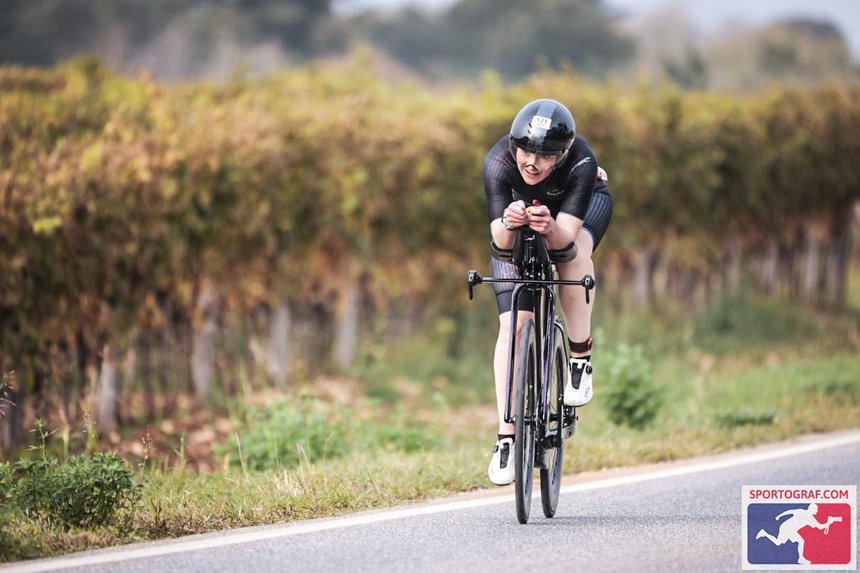Do you think of a Bike Fit has a one-off venture that will leave you faster, more efficient and most importantly free from pain on your bike? If so, you’re definitely not alone. I was of this opinion before I met Iain, our Lead Bike fitter at PFP, and learnt that a Bike Fit is far more than just moving your saddle height and slamming your handlebars. In this blog I will explain why Bike Fit is much more than this and how it is a long-term, progressive process NOT a 3-hour quick fix - however much I wish it was! I will also talk about the importance of having a great multidisciplinary team behind you, something I’ve really come to appreciate and value this season.

What is a Bike Fit?
First of all, I thought I would briefly explain what a Bike fit is. A Bike Fit, at PFP, first involves a chat where you discuss with your fitter your goals, historic / current injuries, and aims for the session. After that, it’s time to get on the bike for an initial recording. For many, seeing that initial position can be a bit of a shock! For me it kind of reminded me of those posts you see on social media ‘What I think I look like versus what I actually look like’? Let’s just say, for me what I pictured in my head and the reality were quite different. After you’ve overcome the shock of this and your fitter has explained their initial perceptions of your position, you will get a comprehensive off-the-bike biomechanical assessment. At PFP this often starts with the dreaded single-leg squat. I promise it gets easier from there though. The purpose of this biomechanical assessment is to determine what you can actually achieve on the bike. Although we all want to ride a super aggressive position (me included) our body sometimes just doesn’t want to play. Once the biomechanical assessment is complete, your fitter will start making adjustments to your bike and provide guidance on posture / technique and that’s it! 3 hours and it’s all over, you’re set for life, or are you?
No! Bike Fit is a long-term process
Let’s think back to the Bike Fit and the biomechanical assessment. One of the purposes of the assessment is to give your fitter enough information to be able to set your bike up correctly, but it also has another purpose - to determine if you have any weaknesses in terms of flexibility, core strength etc. So, what do we do with this information? The short answer is we work on it and by working on it we can achieve that super aggressive position that we initially aspired for. For some people a workout from their bike fitter might be enough. However, for others with more complex issues a referral to another professional (e.g., strength and conditioning coach, physiotherapist or naprapat) may be needed. How long it will take to work on these weaknesses will vary for each individual and will be highly dependent upon what you want to achieve but I promise you however long it takes it will be worth it! You wouldn’t expect to learn to swim in 3 hours so why would you expect to be able to ride a bike perfectly in this time?

¨February 11th 2018 - Before and after my initial Bike Fit with PainFreePower
My journey
For me, personally, it has unfortunately been a very long process but one I am very happy that I embarked upon. To give you a little bit of background… When I was 15 years old, I had spinal surgery which involved bone grafts and metals rods in my spine. Before this I had never cycled but I wanted to give triathlon a go so I bought my first road bike, a Giant Defy, and off I went. But things weren’t quite that simple. I would experience excruciating pain less than 10km into a ride and initially was struggling to even finish the distance required for a sprint triathlon. I did make adjustments to my bike and this did improve things somewhat but, at this point, there was no way I was in any position to achieve my goal of completing a 70.3 never mind an Ironman. Over the next few years, I invested in a tempo bike and was able to get around an Olympic Distance Triathlon, but this was by no means ‘pain free’.
In 2018, I entered Ironman Kalmar for the coming year. I knew this would be a huge challenge for me so I had a follow-up on my Bike Fit (my first visit to Iain and PFP) and started to do more work off-the-bike to try to combat the pain. At first the exercises I was doing were incredibly basic as I wasn’t strong enough for exercises like plank (if this is you, this is ok, just remember we are all starting from a different place and have a different destination) but I got stronger quickly, and gradually, with conscious engagement, I was able to hold a better posture on the bike and the pain started to get better. However, training did not go to plan and although I did complete the race and was proud of my achievement, it was hardly a resounding success. I had to get off the bike several times to stretch my back. I knew from the moment I crossed the finish line, I wanted to try again…

Then Covid hit and like many of us my training took a back-seat. Last year though races started to come back and I thought I would try to get back into triathlon. My first race was Linkoping sprint triathlon and I absolutely loved it! From there I decided that I wanted to take things a little bit more seriously so I decided to get a triathlon coach (Patrik Ericsson) and I also to go to see a Naprapat (Johan Lind from Friskvardskollen) to see if they, along with Iain, could make more progress with my back issues. Having this multidisciplinary team is one of the best decisions I have ever made in respect to triathlon but also for my overall wellbeing and quality of life. Of these things getting a coach was a very logical step for me. Having Patrik has given my training structure. He pushes me with my training but always listens and is mindful of my limits.
Going to seek the help of a Naprapat, I will admit, required more convincing. Initially, I was very dubious. First, being from the UK I didn’t really understand what a Naprapat was. Second, I have seen multiple different health professionals (e.g., physiotherapists, chiropractors) since having my operation with very little improvement in my symptoms. I should probably mention here that I used to not only have pain on the bike, but sitting in the car too long, sitting at a desk, walking – it had basically just become part of every day life. Then I went to see Johan and almost immediately it felt like there was hope that this wouldn’t be the norm.
At the first appointment, Johan was very transparent and explained that there was a lot of work to do. Although I wasn’t thrilled by this news, I appreciated his honesty and felt optimistic as he mapped out the approach we would take. In the first session, he did a treatment and ran through some mobility exercises for my hips and lower back (these needed to get stronger but I wasn’t ready to dive straight into lifting big weights). I woke up the next day, and immediately felt more relaxed and as if the pain had dissipated somewhat.
I continued with my mobility exercises over the next few weeks and realised that I was having to stop less and less on my bike rides. I have been back to see Johan several times this year. We started to incorporate more strength exercises into my training. This not only allowed me to ride for longer without pain but also enabled me to sit in a much more aggressive and aero position on my bike. Since working with my little multidisciplinary team I have completed two 70.3 triathlons. The most recent was in Croatia and I have to say my back didn’t even cross my mind throughout the whole race. I came of the bike second in my age group and only 3.5 minutes behind the overall leader – wow! I can absolutely say that I would not have achieved this without the open communication and hard work of Iain, Patrik and Johan so a big thank you 😊

Final thoughts
I generally feel very uncomfortable writing anything about myself but I thought this blog could be important to some of you out there who are in pain and losing hope. I just want to let you know that if you are experiencing similar difficulties on the bike (or in life in general), I can completely understand and I know how difficult and frustrating this can be. My advice is be patient, find your dream team (for me – Iain, Patrik, and Johan) and most importantly trust in the process! If I can do it, so can you 👊
If you would like help on your journey to riding 'Pain Free' please get in touch!